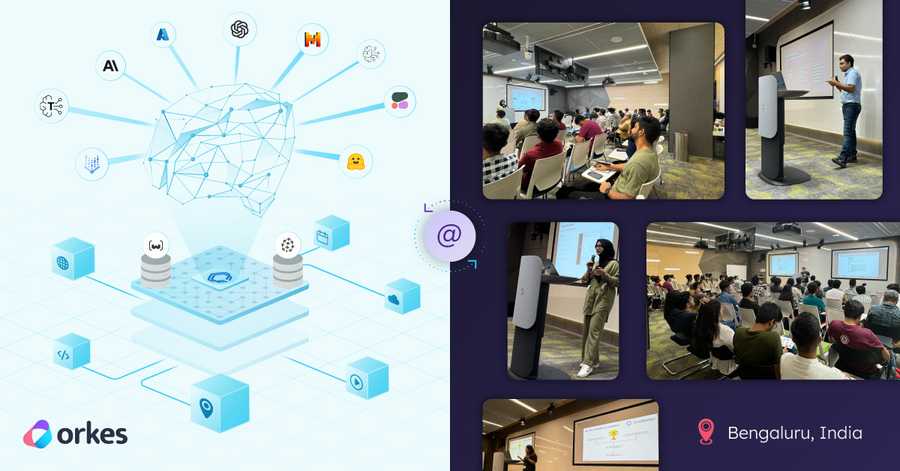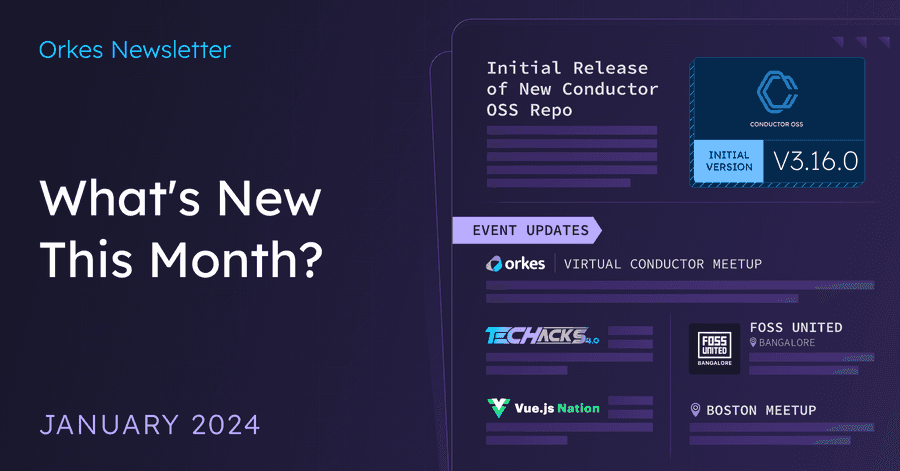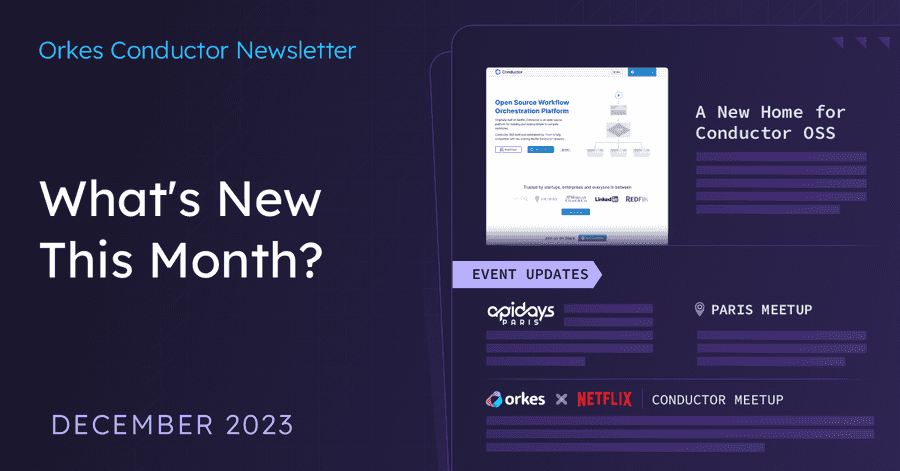Meetup recap - Using Conductor in Production
In early Feb 2022, we had our first meetup on Netflix Conductor: Using Conductor in Production. It was also co-hosted by the Netflix Conductor team.
We had two excellent talks from Maros Marasalek at FRINX and Nick Tomlin at Netflix.
After the two talks, we had 2 roadmap sessions. The first session was by the Netflix Conductor team - where they discussed recent releases, and walked through the Open Source roadmap for the coming months. The second session, by our own Viren Baraiya, introduced Orkes, and our plans for extending Netflix Conductor.
Conductor in FRINX
Maros' presentation showed how the FRINX team has integrated Conductor into their product, and how the FRINX tooling helps to build custom workflows.
Bridging human and system workflows with Conductor
Nick Tomlin works on the Finance team at Netflix, and his team has built a set of Conductor workflows that enable other Netflix teams to quickly build and share workflows.
Netflix Conductor roadmap
Our third talk was from the Netflix Conductor team - where they presented the roadmap for Netflix Conductor for the coming months.
Introducing Orkes
Finally, one of our founders (and the committer of the first line of Conductor code) Viren Baraiya presented Orkes and our roadmap:
Q&A
Throughout the meetup, the attendees asked a number of great questions. They are reproduced here for visibility outside the meetup.
Hello, thanks for organizing such an event. I would like to know if there are any performance metrics for Conductor? We are planning to use it in a system with heavy traffic(multimillion requests each of them would trigger a workflow) and I would like to know if it’ll be reliable enough. Thank you :)
Conductor is horizontally scalable and we have known users scaling to handle workloads at the scale you mentioned. Here is a recent discussion on scale on GitHub, and a post from Netflix talking about the scale.
Conductor was built ground up for high reliability and performance. There are several companies that are running multi-million workflows on their core business flows.
I hear Netflix also is using Temporal.io which is cadence based. https://www.youtube.com/watch?v=JQ6FRTnQWFI How do the two overlap at Netflix and the reason behind the use of Temporal?
Conductor is the default workflow orchestration tool of choice at Netflix. That said, engineers are free to choose the tool that’s best for their needs. The Spinnaker team at Netflix felt that Temporal is best aligned with their needs.
You mention CLI. Any thoughts about SDK as well?
Yes, we are working on that - stay tuned : (Note: Check out the Orkes video above on things we are planning for next couple quarters)
Can AWS Lambda be hooked up as a task in workflow
AWS Lambda can be hooked up, but it's not available as a default task. There is an extension available that will allow integrating with AWS lambdas. We can send you details about this.
From the previous presenter, what is the expected timeline for all those features to be released?
Most of the features we mentioned today will be released over the next 2-3 quarters in phases.
Any pointers about production level setup instructions of Dynomite (with the consideration of DR) on K8s cluster?
Please connect with us on our community slack channel or via Github discussions. Dynomite is not actively maintained anymore and is on its way towards being deprecated. There are alternatives that will offer similar features of Dynomite.
Thank you
Thank you to all the speakers for their incredible presentations, and also to our community for such great questions. This is our first of many meetups, and we hope to see all of you (and everyone else) at our next meetup.
In the meantime - don't forget to Star the Conductor repository.
For the latest updates on Conductor and Orkes, please subscribe to our YouTube channel, and follow us on Twitter.











